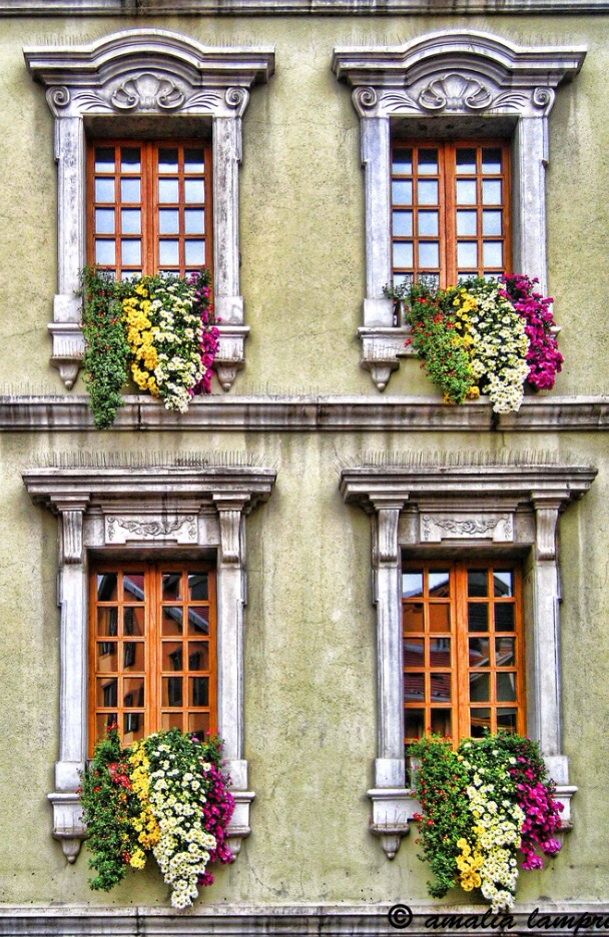#5188. Historical facade with Baroque window casings and cascading floral compositions
The image depicts a fragment of a historical building facade executed in classical European style. The facade features a light olive plaster with characteristic weathering marks, which gives the building an authentic appearance and emphasizes its age.
Four symmetrically arranged windows are adorned with elegant stone casings made of light-colored stone. The upper windows are crowned with curved pediments featuring decorative elements in the form of shells and volutes. The lower windows have more austere framing with straight cornices and fine carving. The wooden window frames are made of warm brown wood with traditional small glass panes.
Special expressiveness is added to the facade by lush flower compositions cascading from the windowsills. These living decorative elements include plants with flowers of different shades: bright yellow, white, pink, and purple flowers create a colorful contrast with the monochromatic surface of the wall. This combination of architectural austerity and natural picturesqueness is typical for towns in Central and Southern Europe.
The details of the window trim, including sculptural elements and proportions, indicate Baroque or late Renaissance influence, suggesting that the building dates back to the 17th-18th centuries. The preservation of the facade elements testifies to careful restoration and maintenance of the building's historical appearance.
